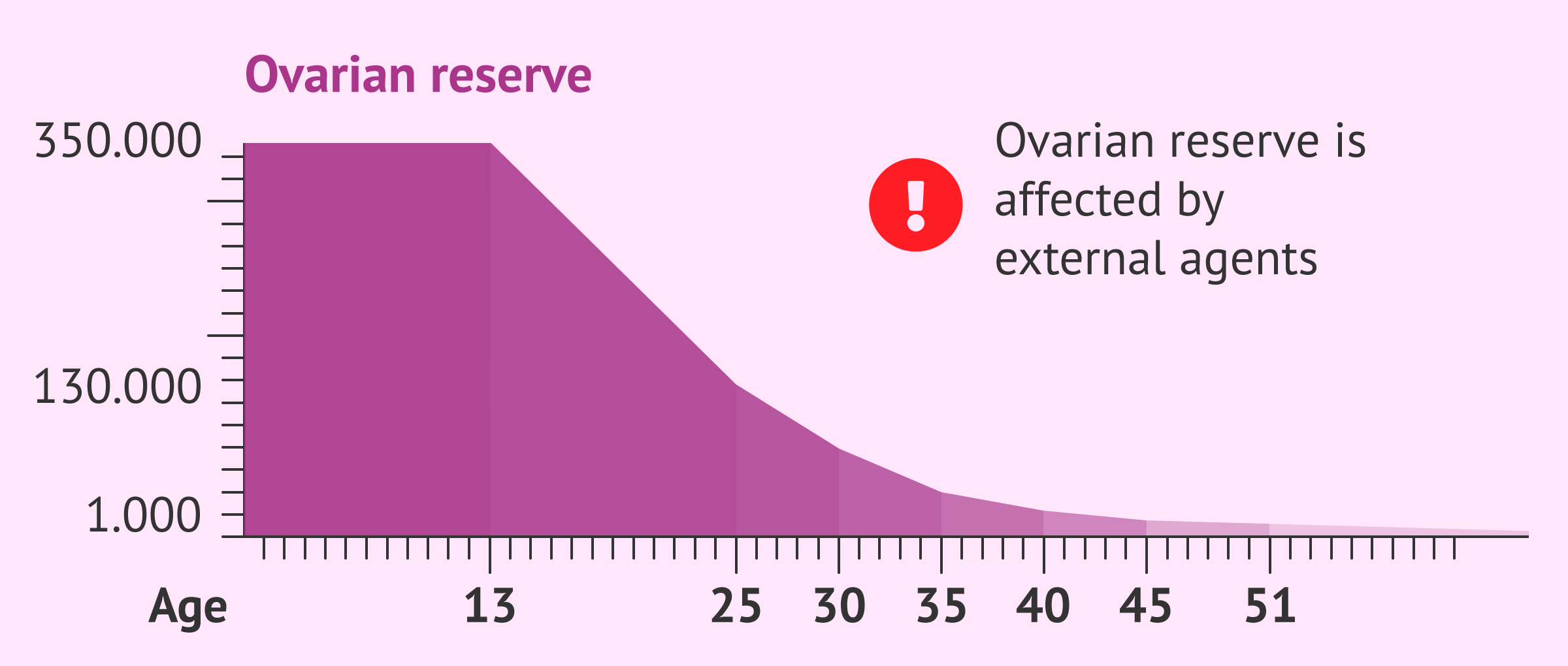What Is the Ovarian Reserve in Women?
A woman’s ovarian reserve is formed while she is still a fetus. At around five months of fetal age, the ovaries contain nearly four million eggs.
By the time she is born, this number decreases to around two million eggs on average.
When she reaches puberty, the number drops further to approximately 400,000 eggs, and the count continues to decline over time due to the body’s natural biological changes.
Every month, about 20 to 30 eggs begin to mature, but only one egg usually completes its development and becomes ready for fertilization.
The ovarian reserve keeps declining as a woman ages — at 37 years old, the average number of eggs drops to 30,000, and by the age of 40, it reaches roughly 8,000 eggs.

Can the Ovarian Reserve Be Accurately Measured?
Yes. It can be accurately evaluated through a blood test known as the Anti-Müllerian Hormone (AMH) test, which provides a reliable indication of the number of eggs remaining in the ovaries.
What Causes a Decrease in Ovarian Reserve?
The main factor behind reduced ovarian reserve is aging.
However, some medical conditions may lead to premature depletion of ovarian follicles, including:
-
Autoimmune disorders that mistakenly attack ovarian tissue.
-
Turner syndrome.
-
Pelvic inflammatory diseases.
-
Endometriosis.
-
Ovarian tumors or cancer treatments.
-
Surgical injury to the ovaries during pelvic procedures.
Are There Natural Ways to Maintain Ovarian Reserve?
Yes, if there are no underlying medical issues, a woman can help maintain her ovarian health through:
-
Avoiding smoking.
-
Reducing stress and anxiety as much as possible.
-
Following a healthy, balanced diet rich in vitamins and minerals.
-
Maintaining a healthy body weight.
-
Drinking at least 10 cups of water daily.
-
Taking vitamin supplements as recommended by a doctor.
Do Fertility Medications Affect the Ovarian Reserve?
There is no direct link between fertility-stimulating medications and the reduction of egg count.
Can the Ovarian Reserve Be Increased?
Until recently, it was considered impossible to increase ovarian reserve.
However, recent medical research has introduced promising techniques, such as Platelet-Rich Plasma (PRP) ovarian injections, which have shown remarkably positive results.
At Dr. Mohamed Abdel Fattah El-Saniety’s Women’s Clinic, this procedure is now available, offering new hope for women with diminished ovarian reserve — with encouraging outcomes by the grace of God.
How Does PRP Help Improve Ovarian Reserve?
The process involves stimulating ovarian tissue regeneration by injecting platelet-rich plasma directly into the ovaries.
The platelets release growth factors that help revitalize and repair ovarian cells, improving the function of dormant follicles.
What Is PRP?
Platelet-Rich Plasma (PRP) is a natural component of blood, which consists of red blood cells, white blood cells, platelets, and plasma — a clear yellowish fluid.
The plasma contains essential hormones, vitamins, and minerals, making it a natural, safe substance derived from the patient’s own body.
It is extracted from a small blood sample and reintroduced into the ovaries to promote regeneration and improved function.
AMH Test for Ovarian Reserve
What Is the AMH Test?
The Anti-Müllerian Hormone (AMH) test is one of the most reliable indicators of ovarian reserve. It measures the level of the AMH hormone secreted by small follicles inside the ovaries, reflecting the number of remaining eggs.
What Does the AMH Level Indicate?
-
A high AMH level usually suggests a good ovarian reserve, meaning there are still a significant number of eggs available.
-
A low AMH level indicates that the ovarian reserve has decreased and that the number of available eggs is limited.
Can the AMH Test Be Wrong?
While the AMH test is highly accurate, certain factors may affect the result, such as:
-
Taking birth control pills.
-
Hormonal imbalances.
-
Recent ovarian surgery.
-
Obesity or extreme weight loss.
Therefore, the result should always be interpreted by a specialist doctor, who may request additional tests if necessary.
When Should the AMH Test Be Done?
The AMH test can be performed on any day of the menstrual cycle, as hormone levels remain relatively stable throughout the month — unlike other fertility-related hormones that fluctuate during the cycle.
Normal Ovarian Reserve Levels by Age
-
At age 30: AMH levels typically range between 2.5–4.0 ng/ml.
-
At age 35: The normal level is usually around 1.5–2.5 ng/ml.
-
At age 40: The level may drop to 0.5–1.0 ng/ml or lower, depending on individual variation.
Does Low Ovarian Reserve Mean Infertility?
Not necessarily. A low ovarian reserve means that the number of eggs is limited, but it does not eliminate the chance of pregnancy — especially with modern fertility treatments such as:
-
In vitro fertilization (IVF).
-
Ovarian PRP therapy.
-
Hormonal stimulation protocols tailored to each patient’s case.
How to Support Ovarian Health
To enhance ovarian function and slow down the natural decline in egg reserve, specialists recommend:
-
Getting 7–8 hours of sleep daily.
-
Maintaining a balanced diet rich in antioxidants and omega-3.
-
Engaging in regular moderate exercise.
-
Avoiding exposure to environmental toxins and chemicals.
-
Consulting a gynecologist regularly for follow-up and early detection of any hormonal issues.
In Summary
Ovarian reserve naturally decreases with age, but thanks to modern advances in reproductive medicine — such as PRP ovarian rejuvenation — women now have greater opportunities to enhance their fertility potential and preserve reproductive health.
For women facing fertility challenges, early diagnosis and consulting a specialist in reproductive endocrinology can make all the difference in achieving successful pregnancy outcomes.
